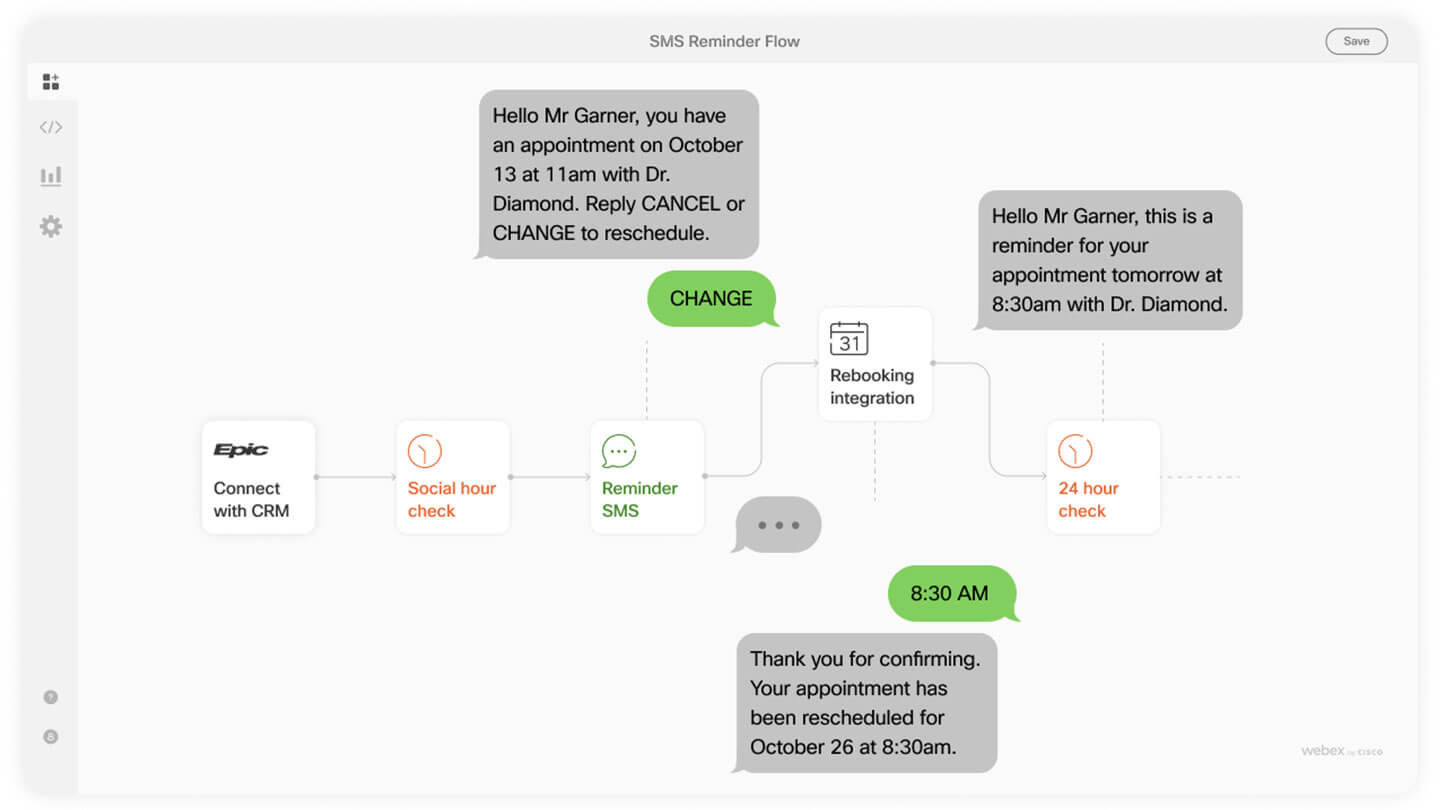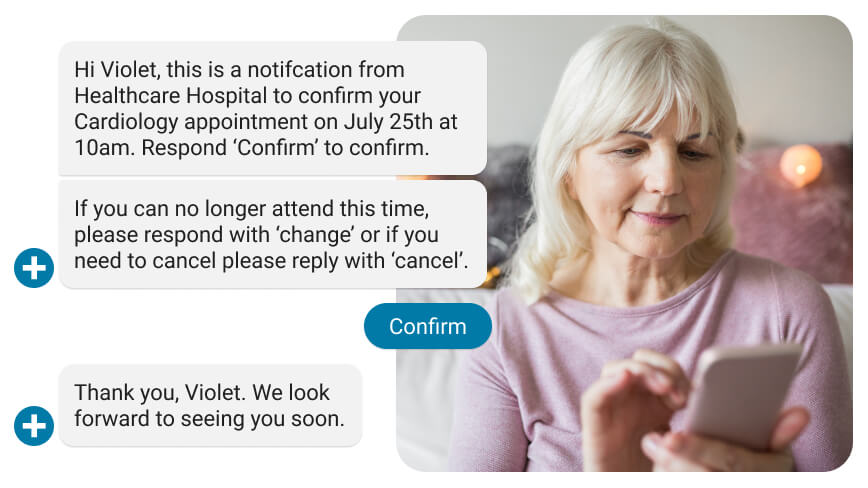CPaaS - The ideal prescription for effective patient communications.
Discover a cloud-based platform for seamless, omnichannel patient journeys that nurture loyalty and drive meaningful engagement - when and where it matters most.

Contents
The US healthcare sector is under tremendous pressure to deliver positive patient outcomes while securing appropriate reimbursement and keeping costs under control. But that’s easier said than done when faced with increasing demand for care from an aging population, and rising burnout and staff shortages across the healthcare workforce.
Patients are sensitive to these challenges, but they still expect timely, empathetic, and joined-up experiences that inform and enhance their care journey. In response, healthcare providers must find innovative ways to deliver proactive, patient-centric communications.
In this blog, we’ll explore why modernizing your communications strategy is essential, the challenges in getting it right, and how communications platform as a service (CPaaS) can help transform patient engagement.
What’s holding patient communication back?
Sky-high expectations and value-based reimbursement models mean providers must work extra hard to engage patients as active participants in their healthcare journey.
Many healthcare organizations operate disconnected touchpoints and siloed services that prevent proactive, two-way engagement. This makes it especially difficult to coordinate ongoing care and automate timely, interactive reminders that help minimize costly patient no-shows.
The absence of seamless omnichannel support and intuitive self-service options can also drive patients to competing providers or to stop engaging with their treatment plan altogether.
That’s why many healthcare providers use CPaaS to automate joined-up messaging journeys that move seamlessly across patients’ preferred channels. CPaaS helps providers:
Minimize missed appointments through interactive reminders
Enable patient self-service to improve healthcare engagement
Automate routine interactions to free contact center resources
Create managed care journeys to reduce hospital readmissions
Prepare patients for care and keep them proactively informed
What can CPaaS do for my healthcare organization?
Getting started with CPaaS is simpler than you might think. The best CPaaS solutions provide fast, cloud-based access to a single, real-time view of all patient interactions.
They also democratize access to a visual journey builder, enabling non-technical users to create engaging patient experiences across the latest digital channels by dragging and dropping pre-built components.

You can also integrate digital channels with your back-office systems to apply actionable insights to your patient interactions. That’s a must for personalization and supporting contextual, two-way exchanges, like enabling patients to request prescription refills via their preferred channel. And because CPaaS connects all the dots, patients can easily pick up interactions where they left off at any time, on any channel.
Let’s take a look at some of the most common CPaaS use cases in healthcare:
CPaaS use cases in healthcare
Enable chatbots and patient self-service
Enabling instant access to healthcare services is critical, but with resources at a premium, it can be difficult to tend to every patient manually. CPaaS can embed AI-powered chatbots into your digital channels, enabling 24/7 access to routine patient support services.
For example, chatbots can answer frequently asked questions throughout patients’ care journeys, share care and treatment records, and enable patients to book and amend appointments and prescriptions. This also helps deflect routine inbound calls, so clinical staff and contact center agents can focus on more complex or sensitive cases.
Master contextual patient messaging
Users can build proactive, two-way messaging journeys to keep patients informed and engaged. For example, you can send appointment reminders with the option to confirm attendance or rebook in-channel. You might also enable patients to share symptom and medication updates to help keep track of a treatment’s effectiveness.
If a doctor wants their most forgetful patient to take their medicine at 3p.m. daily, they can automate a reminder to the patient’s preferred digital channel. Plus, integrated support for contextual buttons lets patients respond quickly by pressing “yes” to confirm they’ve followed your directions. Or if they prefer SMS, they can text back too.

Deliver telehealth services
CPaaS can help you bridge the care gap and deliver remote consultations using encrypted video and augmented on-screen file sharing. This means patients can get the care they need without having to make a journey that may be long or challenging for them.
As some patients may struggle to navigate digital conferencing tools, it’s important to help them prepare, so clinicians don’t have to spend clinic time providing tech support rather than patient care. You can use CPaaS to automate reminders ahead of virtual visits, with clear instructions on how to prepare and the option to ask for technical assistance in advance.
This is just a glimpse into what healthcare organizations can achieve with Webex Connect. For real-world examples of the use cases mentioned above, read our latest healthcare customer case study.



